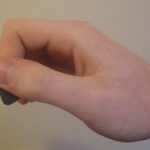The quest for unique guitar tones often leads players to explore instruments beyond the standard six-string guitar. The baritone guitar, with its longer scale length and lower tuning, offers a sonic landscape distinct from both standard guitars and basses. For guitarists intrigued by the deep resonance of instruments like the Fender Bass VI but seeking a more accessible option, the Danelectro Baritone Guitar emerges as a compelling candidate. A common question arises: can a Danelectro baritone guitar be tuned to standard E-E, mimicking a regular guitar tuning but at a lower octave, similar to a Bass VI?
Understanding scale length is crucial when considering tuning a baritone guitar. Scale length, the distance between the nut and the bridge, significantly impacts string tension and the feasibility of different tunings. Baritone guitars typically feature longer scale lengths than standard guitars, facilitating lower tunings. While some baritones are designed for lower tunings like B-B or A-A, models with sufficient scale length, such as many Danelectro baritones, can indeed accommodate an E-E tuning.
Danelectro baritone guitars are often recognized for their vintage vibe and unique sonic character, frequently employed in genres ranging from surf rock to alternative and beyond. Their scale length, generally around 29-30 inches, positions them favorably for E-E tuning. This scale length is comparable to the Fender Bass VI’s 30-inch scale, an instrument famously tuned E-E, one octave below standard guitar tuning. Therefore, with the correct gauge of strings, a Danelectro baritone guitar can be successfully tuned to E-E, achieving a tone reminiscent of the sought-after Bass VI sound.
To achieve a stable E-E tuning on a Danelectro baritone, selecting appropriate string gauges is paramount. Using standard guitar strings will result in excessively loose strings and an inability to reach the desired pitch. Heavier gauge strings, designed for baritone or bass guitars, are necessary to provide adequate tension at E-E tuning on a longer scale instrument. Experimentation with different string gauges might be needed to find the optimal set that balances playability and tonal response for E-E tuning on your specific Danelectro baritone.
While the Danelectro baritone presents an accessible path to exploring lower tunings, other baritone guitar options exist. The Schecter Hellcat Baritone, for example, is another popular choice, often praised for its versatility and build quality. When considering baritone guitars, it’s important to note that scale lengths can vary. Shorter scale baritones, often favored by heavy rock and metal guitarists for down-tuned playing, might not be ideally suited for a standard E-E tuning. These shorter scale instruments are typically designed for lower tunings and may not provide sufficient string tension at E-E, even with heavier gauge strings.
In conclusion, tuning a Danelectro baritone guitar to standard E-E tuning is indeed possible and a viable way to capture tones similar to a Fender Bass VI without the vintage instrument’s premium price tag. The key lies in understanding scale length and utilizing appropriate string gauges to achieve optimal tension and intonation. By carefully selecting strings and considering the inherent characteristics of your Danelectro baritone, you can unlock a world of deep, resonant tones and expand your sonic palette.

